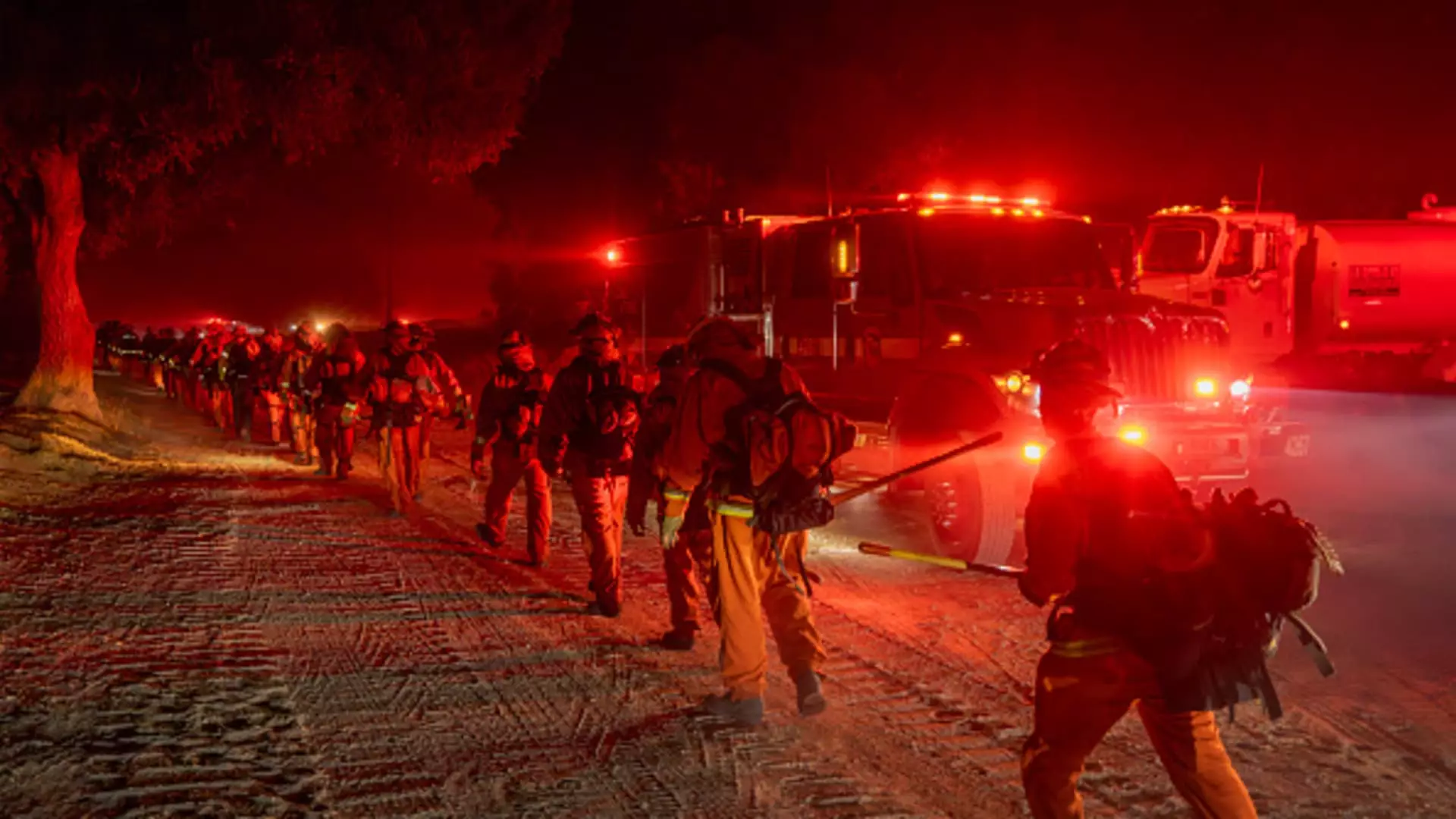Southern California is once again grappling with the pervasive threat of wildfires, a seasonal dilemma that has accelerated in both frequency and intensity over the years. The recent Hughes Fire, ignited just north of Los Angeles, exemplifies how rapid meteorological changes and environmental conditions can conspire to create catastrophic fire conditions. This blaze, which erupted near Castaic Lake, has burned over 10,000 acres and, as of the latest updates, is reported to be 36% contained. Fortunately, there have been no significant structural losses; however, the fire triggered mandatory evacuation orders for over 31,000 residents, highlighting the immediate dangers associated with these infernos.
As wildfires rage across the state, the underlying climatic factors must be carefully scrutinized. The phenomenon of fast-moving fires fueled by dry, dead vegetation—especially under the influence of Santa Ana winds—has become all too common. This latest fire was ignited during a perilous weather pattern where red flag warnings were issued due to gusty conditions. At this particular moment, it is crucial to consider how changing climate conditions have contributed to this scenario, making such wildfires a devastating certainty rather than mere possibilities.
While the Hughes Fire has thus far spared homes and lives, the mental state of the population is precarious. Evacuation orders and ongoing warnings mean that tens of thousands of residents are forced into a state of constant alert, adding endless stress to their daily lives. The emotional and psychological impacts of living in fire-prone regions cannot be understated; families must perpetually prepare for the worst while grappling with the uncertainty of returning home after evacuations.
Moreover, the devastation caused by previous fires in the area, specifically the intertwined Eaton and Palisades fires, serves as a stark reminder of the havoc that wildfires can wreak. These fires, occurring in rapid succession, have resulted in the loss of lives and the disintegration of entire communities. Fire officials reported that more than 9,400 structures were lost during these previous incidents, affecting thousands of lives and putting even more strain on local resources.
The accelerating frequency of wildfires raises important questions about the fundamental role of climate change. Studies consistently emphasize a link between climate patterns and exacerbated fire conditions. The recent spate of high-intensity fires throughout Los Angeles can arguably be linked to greater systemic issues—especially considering that the region has seen a troubling trend in both rising temperatures and prolonged drought periods.
Authorities such as Los Angeles County Fire Chief Anthony Marrone have expressed grave concerns about the correlation between climate change and the severity of these fires. The strong winds that enhance fire spread not only make firefighting efforts more complex, they also serve as catalysts for destroying natural reserves, farmland, and urban structures alike.
As wildfires become a part of life in Southern California, preparedness and prevention strategies must become integral components of community planning. Improvements in community infrastructure, integration of fire-resistant landscapes, and robust evacuation plans are key to mitigating damages. Equally important is the investment in emergency services, which should continuously evolve to adapt to the growing threat of wildfires.
One promising avenue lies in community engagement and education, empowering residents to take proactive steps in fire prevention. Equipping individuals with the knowledge to manage vegetation in and around their properties, as well as fostering a culture of responsibility during fire season, could minimize risks significantly.
Meanwhile, as climate change looms over this crisis, it becomes further imperative for local and state governments to address broader environmental policies. Decreasing carbon footprints, investing in renewable energy resources, and creating community-wide programs aimed at sustainability can significantly contribute to combating the systemic causes of such wildfires.
The Hughes Fire serves as yet another urgent reminder of the escalating threat posed by wildfires in Southern California. With its complex interplay of human impacts, environmental factors, and climate change, the road ahead must be navigated with foresight and determination. The lessons learned from past wildfires should fuel urgent discussions around sustainable policies and community-focused strategies, turning this ongoing threat into an opportunity for systemic change.


Leave a Reply